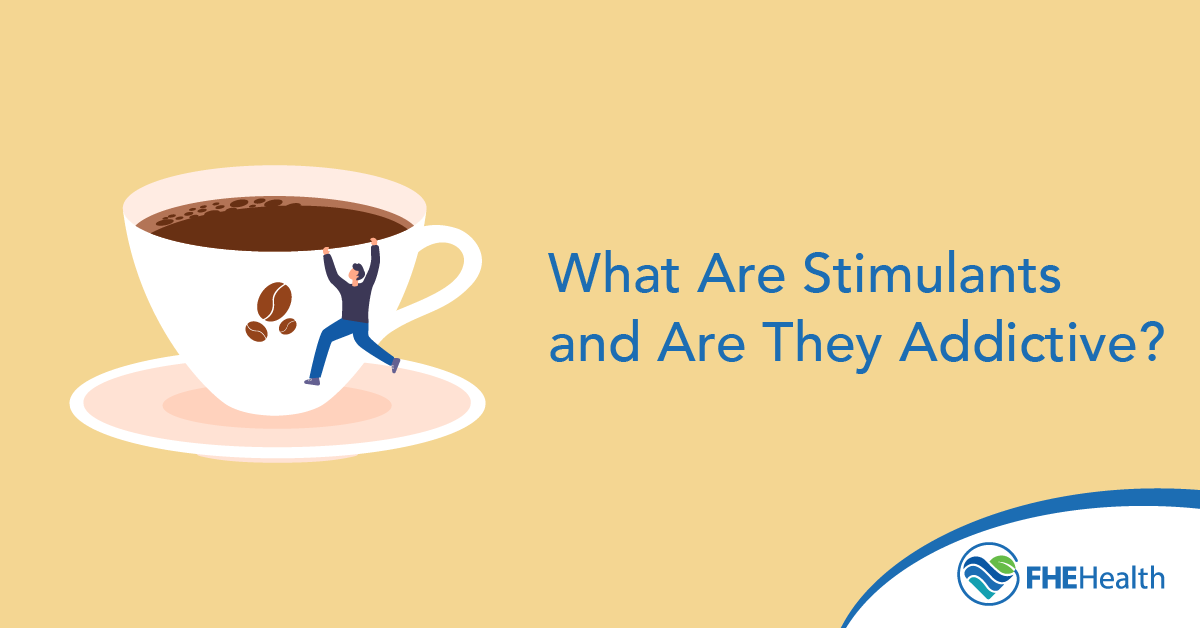
If you talk to any high school teenager or college student, there’s a high chance they’ll know someone taking Adderall. Or caffeine pills. Or other stimulants to help them get through the demands of the day and party at night. Stimulants are a popular choice for young people. Still, no matter how favored these drugs may seem, they come with real risks. Adderall overdoses, cocaine overdoses, addiction and even caffeine withdrawal are all real potential consequences of stimulants.
What Are Stimulants?
One of the broad classifications for intoxicating substances is stimulants — drugs intended to increase alertness, invigorate the body and enliven the mind. The focus of a stimulant is the central nervous system. However, in the process of invigorating you, it can also send your blood pressure, anxiety and heart rate skyrocketing, causing temperature deregulation.
Some stimulants are legal medications used to treat everything from allergies to ADHD; some are illegal, such as meth and cocaine. Some are just regular substances you might use in your daily life, such as caffeine in coffee and energy drinks.
Addiction to stimulants, depending on the substance, can be devastating and have long-lasting consequences.
Examples of Stimulants
Here are some examples of the most common stimulants.
Legal Stimulants
- Epinephrine. An injectable stimulant that’s often used to jump-start the central nervous and respiratory systems in cases of extreme allergic reactions.
- Caffeine. The most socially accepted stimulant, caffeine, is sometimes added to pain medication as a way to increase the productivity of the painkiller. For example, migraine medication will sometimes include some amount of caffeine. Caffeine is most commonly consumed through food or liquid as a legal stimulant, but it’s also sometimes found in pill form.
- Amphetamine prescription drugs like Adderall and Concerta. These drugs are intended to combat hyperactivity and lack of focus. These are mostly taken as pills.
Illicit Stimulants
- Cocaine. A recreational stimulant, cocaine is usually taken by snorting it up the nose, rubbing it into the gums, inhaling or smoking.
- Methamphetamine. A recreational drug, meth is an illicit and very dangerous version of an amphetamine taken by a pill, in a beverage or food, snorting or smoking the substance.
Why Do People Use Stimulants?
There are many reasons someone might start using stimulants, including:
- Needing energy. All stimulants provide you with a burst of energy. So when someone is tired, depressed or feels like they have too much to do, they might turn to stimulants for help. This can look as innocent as having several cups of coffee throughout the day. Or it can be more dangerous, like taking Adderall pills from a friend.
- Weight loss. Many stimulants can suppress appetite, potentially leading to weight loss.
- Chasing a high. Certain stimulants, such as cocaine and meth, can provide a quick and intense high.
- Recreational purposes. People often take stimulants recreationally when they’re at a party to “loosen up and have fun.” They might make this choice due to peer pressure, a lack of understanding of the potential risks or other reasons.
- Addiction. Some people struggling with substance addiction may turn to stimulants to get them through the day or as another way to feed their cravings.
Risks of Stimulants: Adderall Overdose and More
As mentioned above, stimulants can be hard on the body, particularly the cardiovascular and cerebrovascular systems. Overworking the heart can cause all manner of complications, such as cardiac arrest or seizures. Many stimulants interfere with the body’s ability to regulate its own temperature, which puts the user at risk of heat stroke or damaging internal organs from elevated temperature. Abuse of stimulants also takes a heavy toll on the mind, as many have side effects that include hostility, paranoia and violent tendencies.
Because stimulants encompass a broad category, there’s a wide range of risks and varying understandings of these risks. For example, almost every adult drinks coffee. However, in large enough quantities, even caffeine can be dangerous. The FDA warns consumers that rapidly consuming 1,200 milligrams of caffeine can lead to toxic effects like seizures.
And then there’s the drugs almost everyone knows are dangerous, like meth and cocaine. These substances are illegal for a reason. They come with a high risk of health consequences, addiction and even overdose.
A Discussion of Adderall: America’s Most Mainstream Stimulant
One stimulant that’s often misunderstood is Adderall. According to the CDC, prescription stimulant fills are highest among those aged 5-19 and 15-24 years. Adderall is a prescription drug that treats a mental health condition, so it’s viewed as safe. However, if you take Adderall when you don’t have a medical need for it or take an incorrect dosage, you could be at risk.
Along with risks like life-threatening high blood pressure, stroke and hallucinations, misuse of the drug can lead to an Adderall overdose.
How long does Adderall last? The effects of Adderall last between 4 and 8 hours, but the drug can stay in the body for 1 to 3 days. If you’re taking the extended-release form of Adderall, the side effects can show up much later. This is particularly dangerous because you might think you’re in the clear and not immediately recognize you’re having a drug-related health symptom.
Signs of Stimulant Misuse or Addiction
Some of the most common warning signs that someone may be misusing stimulants are:
- Decreased appetite and/or weight loss
- Mood swings
- Jitteriness
- Aggressive behavior
- Manic behavior
- Elevated blood pressure
- Hair loss
- Isolation
- Problems at school or work
- Financial problems
- Disinterest in hobbies
Addiction can be all-encompassing, so when a person is starting to abuse drugs, there are often noticeable signs in their behavior. As soon as the warning signs appear, it’s essential to speak with the individual and encourage them to seek help.
Stimulant Addiction Treatment Options
If someone is addicted to stimulants, immediate intervention is necessary. A professional rehabilitation center can help patients progress through all the stages of recovery. For example, someone addicted to Adderall will want medical supervision as they go through Adderall detox.
A typical recovery program for stimulant addiction will include therapy, rehabilitation support and addiction education. Some individuals may choose to participate in medical detox to lessen withdrawal symptoms.
The good news is that addiction isn’t the end of the road. With the proper support, getting back to sobriety and a normal life is within reach.
Getting Help
If you or a loved one in or around The Sunshine State is struggling with addiction to stimulants, it’s essential to get help through a stimulant or amphetamine treatment program in Florida. Through the FHE Health outpatient detox center and long-term drug rehab, you can root out the underlying issue that caused the desire for a stimulant in the first place.
Contact us today to learn more about recovering from addiction to stimulants.






